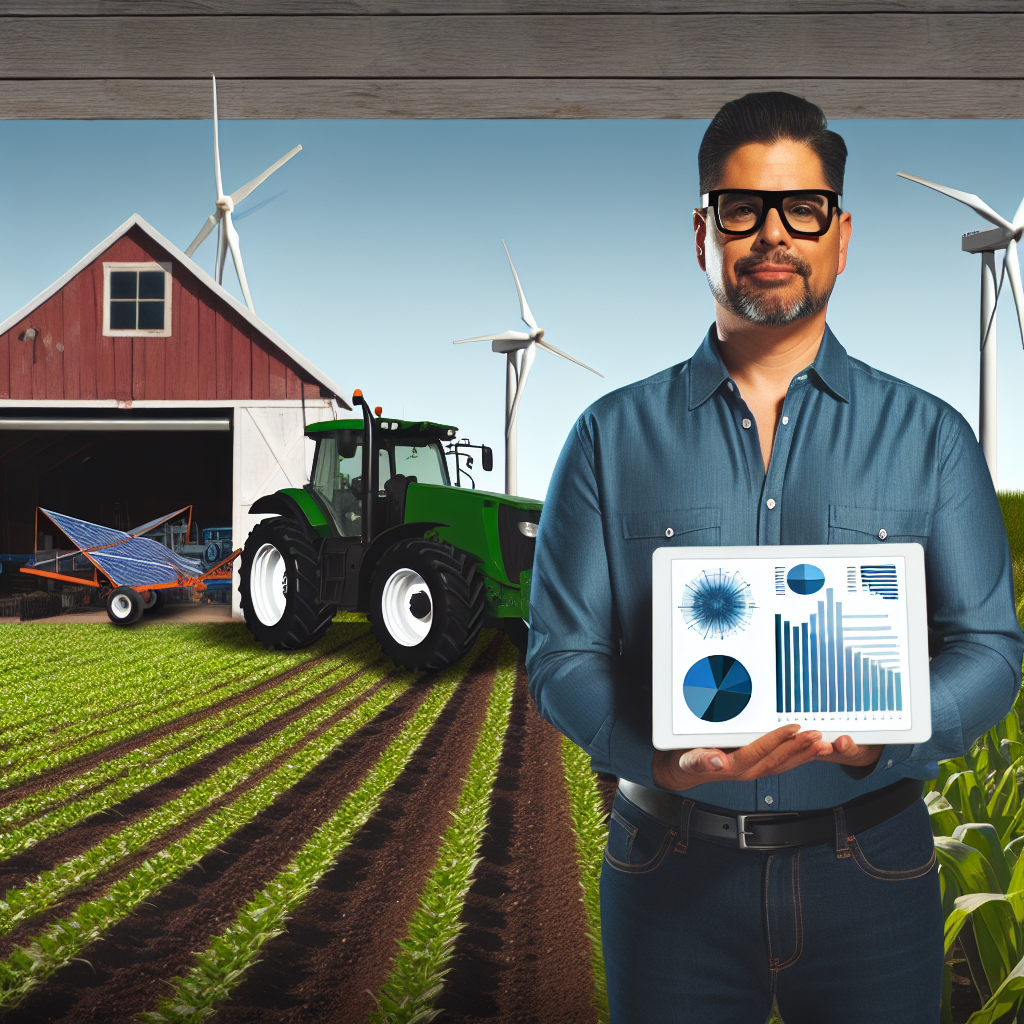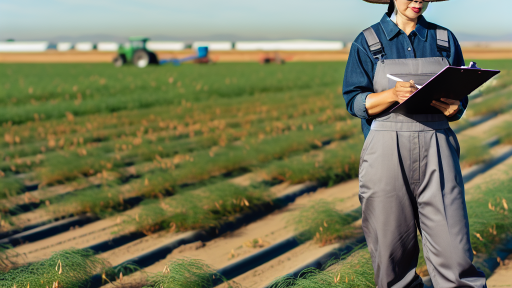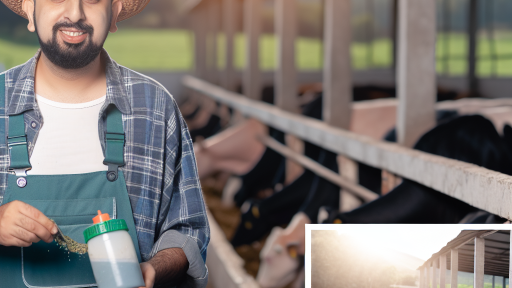Assessing the Current State of Rural Development Policies
Overview of Existing Policies
Current rural development policies focus on economic growth and sustainability.
They aim to support farmers through funding and resources.
However, the effectiveness of these policies varies significantly across regions.
Some areas face challenges in accessing available programs.
Others benefit greatly from tailored initiatives.
Impact on Farming Practices
Rural development policies directly influence farming practices.
For instance, financial assistance can encourage farmers to adopt new technologies.
Consequently, farmers can improve their efficiency and productivity.
These policies also promote sustainable practices, enhancing environmental conservation.
However, not all farmers are aware of the benefits offered by these policies.
Current Challenges in Implementation
Despite the positive objectives, rural development policies face several challenges.
One major issue is limited outreach and education on available resources.
Many farmers do not receive adequate information regarding these policies.
Additionally, bureaucratic obstacles often slow down the implementation process.
As a result, many farmers may not fully utilize the support available to them.
Transform Your Agribusiness
Unlock your farm's potential with expert advice tailored to your needs. Get actionable steps that drive real results.
Get StartedCase Studies of Successful Integration
Successful integration of rural development policies can be seen in various regions.
In Iowa, targeted subsidies have increased adoption of sustainable practices.
Farmers there report improved yields and reduced costs.
Similarly, in California, programs promoting water conservation have gained traction.
Farmers benefit from both economic incentives and environmental preservation.
Future Directions for Policy Improvement
Improving rural development policies can significantly enhance farming practices.
Firstly, increasing awareness through education campaigns is essential.
Farmers need to know about the resources available to them.
Secondly, simplifying application processes can encourage more participation.
Lastly, fostering collaboration between government and agricultural organizations is vital.
These steps can help ensure that rural policies are effectively integrated into modern farming practices.
Identifying Key Stakeholders in Rural Development
Government Agencies
Government agencies play a crucial role in rural development policies.
They create frameworks that guide agricultural practices.
Furthermore, they provide funding and resources for development projects.
Local Farmers
Local farmers are essential stakeholders in rural development.
They implement policies on the ground level.
Moreover, they offer insights based on practical experiences.
Engaging farmers leads to more effective policy integration.
Non-Governmental Organizations
Non-governmental organizations (NGOs) contribute significantly to rural development.
They often bridge gaps between governments and communities.
NGOs advocate for policies that empower rural populations.
Additionally, they provide training and resources to farmers.
Community Groups
Community groups mobilize local populations towards common goals.
They play a vital role in planning and implementing development initiatives.
Showcase Your Farming Business
Publish your professional farming services profile on our blog for a one-time fee of $200 and reach a dedicated audience of farmers and agribusiness owners.
Publish Your ProfileCollaboration among community members enhances project effectiveness.
These groups ensure that local needs are met in policy integration.
Private Sector Entities
The private sector can drive innovation in rural development.
Businesses often invest in agricultural technology and infrastructure.
Additionally, they create market opportunities for local produce.
Engaging with private companies benefits rural economies.
Academic Institutions
Academic institutions contribute research and expertise in rural development.
They analyze data that informs policy decisions.
Moreover, they often collaborate on projects with local stakeholders.
Educational programs help improve farming practices.
Engaging diverse stakeholders enhances policy integration.
Each group provides unique perspectives and resources.
Fostering collaboration leads to sustainable rural development.
Analyzing the Challenges Faced by Modern Farmers in Implementing Rural Development Policies
Understanding Current Barriers
Modern farmers encounter various barriers while adapting rural development policies.
These challenges often stem from limited resources and varying levels of support.
Additionally, inadequate access to information further complicates implementation.
Farmers need clear guidelines to navigate these complex policies effectively.
Financial Constraints
One significant challenge is the financial burden associated with new policies.
Many farmers struggle to secure funding for necessary upgrades and changes.
Without adequate financing, farmers will hesitate to invest in sustainable practices.
Moreover, fluctuating market prices may hinder their ability to commit to long-term strategies.
Infrastructural Issues
Inadequate infrastructure poses another hurdle for modern farming.
This includes poor transportation networks and limited access to technology.
Farmers require reliable infrastructure to efficiently distribute their products.
Without proper infrastructure, the adoption of innovative practices becomes challenging.
Policy Complexity
The complexity of rural development policies creates additional obstacles.
Farmers often find it difficult to interpret and implement these regulations.
Confusion leads to inconsistent application of policies across different regions.
As a result, some farmers may miss out on potential benefits.
Knowledge Gaps
Moreover, knowledge gaps among farmers hinder effective policy implementation.
Not all farmers have access to the latest research and best practices.
This lack of knowledge can lead to ineffective strategies and wasted resources.
Therefore, education and training programs are critical for capacity building.
Community and Collaboration Challenges
Community engagement plays a crucial role in rural development.
Farmers may face difficulties in collaborating with local organizations and institutions.
Without strong community ties, implementing policies becomes a solitary effort.
Establishing partnerships can enhance support for rural development initiatives.
Adapting to Climate Change
Additionally, climate change impacts create further complications for farmers.
Farmers must adapt their practices to an increasingly unpredictable climate.
These adaptations may conflict with traditional methods and policies.
Showcase Your Farming Business
Publish your professional farming services profile on our blog for a one-time fee of $200 and reach a dedicated audience of farmers and agribusiness owners.
Publish Your ProfileThus, understanding local climate conditions is essential for policy success.
Discover More: Managing Risk with Agricultural Insurance Solutions
Exploring Successful Case Studies of Integrated Rural Development and Farming Practices
Introduction to Case Studies
Case studies offer valuable insights into successful rural development strategies.
These examples demonstrate effective integration of farming practices and sustainable policies.
Additionally, they showcase remarkable innovations adopted by local farmers.
Example of Integrated Agriculture in Andhra Pradesh
In Andhra Pradesh, the government introduced a program in 2015.
This program aimed to promote organic farming techniques.
It encouraged farmers to enhance soil health while reducing chemical dependency.
Farmers like Ravi Kumar benefited significantly from this initiative.
Ravi adopted integrated pest management and crop rotation methods.
As a result, his yields increased by 30% over three years.
Women Empowerment through Agriculture in Kenya
The women’s groups in Kenya illustrate the impact of inclusive policies.
They focused on empowering women through training and resources.
One example is the “Grow Together” initiative launched in 2018.
This initiative provided women access to microloans for farming supplies.
Subsequently, women-led farms reported a 40% increase in productivity.
Moreover, these efforts strengthened community ties and improved food security.
Community Supported Agriculture in the United States
Community Supported Agriculture (CSA) presents another successful model.
In many states, CSAs connect local farms to urban consumers.
Farmers receive upfront payments from consumers for seasonal produce.
This arrangement ensures financial stability and reduces food waste.
Notably, Angela’s Farm in California exemplifies this success.
Angela’s Farm increased its membership to 500 families in two years.
This growth illustrates the strong demand for local, fresh produce.
Challenges and Solutions
Despite success, integrated rural development faces several challenges.
Access to funding remains a significant barrier for many farmers.
Additionally, market fluctuations can threaten smallholder farmers.
However, governments and NGOs are addressing these issues effectively.
For example, grant programs help farmers secure necessary funding.
Furthermore, cooperative models enable farmers to share resources and expertise.
Key Takeaways on Integrated Rural Development
Integrating rural development policies with modern farming practices yields positive results.
Case studies highlight the potential for innovation and community empowerment.
Emphasizing sustainability and inclusivity enhances agricultural productivity.
Gain More Insights: Wildlife Conservation Programs In Agriculture
Developing Effective Communication Strategies Between Policy-Makers and Farmers
Understanding the Importance of Communication
Effective communication drives successful rural development policies.
It fosters trust and collaboration between farmers and policy-makers.
This relationship enhances the implementation of farming practices.
Furthermore, communication helps policymakers understand farmer needs.
Conversely, farmers benefit from policy updates and program changes.
Utilizing Multiple Communication Platforms
Diverse communication platforms ensure broader reach and accessibility.
Showcase Your Farming Business
Publish your professional farming services profile on our blog for a one-time fee of $200 and reach a dedicated audience of farmers and agribusiness owners.
Publish Your ProfileSocial media serves as an effective tool for quick updates.
Email newsletters can provide in-depth information and resources.
Workshops and town hall meetings facilitate direct interaction.
These methods promote engagement and dialogue, enhancing understanding.
Encouraging Feedback and Dialogue
Feedback mechanisms allow farmers to voice concerns and suggestions.
Surveys and focus groups can collect valuable insights from the community.
Encouraging open dialogue builds rapport and trust over time.
Policy-makers can showcase how feedback influences decision-making.
This approach ensures that policies reflect the needs of the farming community.
Training and Capacity Building
Training programs can equip both farmers and policy-makers with skills.
Farmers can learn about policy implications on their agricultural practices.
Policy-makers can gain insights into the challenges farmers face daily.
Joint training sessions foster a shared understanding of goals.
Capacity building strengthens the overall communication framework.
Leveraging Technology for Communication
Technological tools enhance communication efficiency and clarity.
Mobile applications can offer real-time access to information and resources.
Webinars provide a platform for education and discussion on policies.
Data-driven approaches can help analyze trends and inform strategies.
Technology empowers farmers to advocate for their needs effectively.
Building Long-Term Relationships
Establishing relationships fosters ongoing collaboration and support.
Long-term partnerships increase trust and mutual respect.
Regular communication nurtures these relationships, making them sustainable.
Policy-makers should prioritize transparency in every interaction.
This commitment fosters a sense of community and belonging among stakeholders.
Find Out More: Legal Incentives for Sustainable Agricultural Practices

Utilizing Technology and Innovation to Enhance the Integration of Rural Development Policies
Adopting Smart Farming Techniques
Smart farming significantly improves productivity in rural areas.
Precision agriculture optimizes resources and reduces waste.
Farmers can use drones for crop monitoring and data collection.
Additionally, sensors help track soil moisture and nutrients.
This technology allows for timely interventions and increased yields.
Implementing Digital Platforms for Market Access
Digital platforms connect farmers directly to buyers.
These platforms can enhance transparency in pricing and transactions.
Farmers gain better access to market information and trends.
Moreover, they can share resources and collaborate with one another.
Encouraging Renewable Energy Solutions
Utilizing renewable energy can lower farming costs significantly.
Solar panels can power irrigation systems and farm equipment.
Wind energy can also be harnessed for additional power needs.
This shift reduces reliance on fossil fuels and enhances sustainability.
Fostering Collaboration with Educational Institutions
Partnerships with universities can drive innovation in agriculture.
Research in sustainable practices can benefit local farmers.
Showcase Your Farming Business
Publish your professional farming services profile on our blog for a one-time fee of $200 and reach a dedicated audience of farmers and agribusiness owners.
Publish Your ProfileAdditionally, training programs can educate farmers on new techniques.
These collaborations create a knowledge-sharing network.
Promoting Access to Financial Resources
Access to funding is crucial for adopting new technologies.
Micro-loans can empower small farmers to invest in innovations.
Government grants can support technology adoption alongside rural development.
Furthermore, financial education can enable better resource management.
Enhancing Communication and Connectivity
Robust internet connectivity is essential for modern farming.
Farmers need reliable access to information and market data.
Community networks can help build a support system for rural areas.
Mobile applications can facilitate communication among farmers.
Gain More Insights: Essential Coverage Options in Agricultural Insurance
Measuring the Socioeconomic Impacts of Integrating Rural Development Policies into Farming
Introduction to Socioeconomic Impacts
The integration of rural development policies significantly influences farming practices.
Understanding these impacts is essential for sustainable agriculture.
This section explores how these policies transform local economies.
Factors Affecting Socioeconomic Impacts
Several factors influence the socioeconomic outcomes of rural development policies.
First, local resources play a critical role.
Additionally, community involvement is pivotal for successful implementation.
Moreover, access to education can enhance farming techniques.
Finally, government support ensures the longevity of these initiatives.
Economic Benefits
Integrating rural development policies leads to significant economic benefits.
Farmers see improvements in productivity and income.
Furthermore, local businesses thrive due to increased agricultural activity.
Job creation enhances community livelihoods.
Moreover, diversified farming practices can sustain economic growth.
Social Impacts
These policies also yield notable social impacts in rural areas.
For instance, they foster social cohesion among community members.
Additionally, increased access to resources empowers marginalized groups.
Health and education also improve in communities undergoing these transformations.
Consequently, families achieve a higher quality of life.
Environmental Considerations
Integrating rural development policies positively affects the environment.
Sustainable farming practices reduce ecological footprints.
These practices protect local biodiversity and ecosystems.
Moreover, they promote soil health and water conservation.
Consequently, the overall resilience of the agricultural sector improves.
Measuring the Success of Integration
Assessment tools are vital for measuring the success of these integrations.
Quantitative measures such as income statistics and production rates provide insights.
Qualitative evaluations can highlight community perceptions and satisfaction.
Furthermore, continuous monitoring ensures adaptability and responsiveness.
Ultimately, effective measurement informs policy adjustments and improvements.
Recommendations for Future Policies to Better Support Sustainable Farming Practices in Rural Areas
Enhancing Financial Support
Government funding should prioritize sustainable farming initiatives.
Showcase Your Farming Business
Publish your professional farming services profile on our blog for a one-time fee of $200 and reach a dedicated audience of farmers and agribusiness owners.
Publish Your ProfileAccess to low-interest loans can empower farmers to adopt eco-friendly practices.
Additionally, grants can support research into innovative farming techniques.
Subsidies for organic certification will also encourage sustainable produce.
Improving Education and Training
Training programs should focus on sustainable agriculture methodologies.
Farmers must be educated on integrated pest management practices.
Workshops on soil health can improve crop yields sustainably.
Furthermore, mentorship programs can pair experienced farmers with novices.
Strengthening Community Engagement
Local communities should play a role in developing agricultural policies.
Farmer cooperatives can share resources and knowledge effectively.
Public forums allow farmers to voice their challenges and solutions.
Encouraging community-supported agriculture enhances local food systems.
Promoting Research and Development
Funding for agricultural research must prioritize sustainable methods.
Collaborations between universities and farmers can spur innovation.
Investments in technology can yield solutions for modern farming challenges.
Data sharing among farmers can improve decision-making and practices.
Enforcing Environmental Regulations
Stricter regulations on pesticide use will protect water resources.
Land use policies should promote conservation and restoration practices.
Furthermore, regulators must ensure compliance with sustainable practices.
A transparent system for evaluating environmental impacts is essential.
Additional Resources
The future of food and agriculture: Trends and challenges
MDARD – Agriculture & Rural Development




